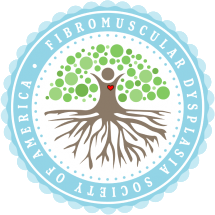Mayo Clinic
The Mayo Clinic Spontaneous Coronary Artery Dissection (SCAD) Research Program is part of an innovative multidisciplinary collaborative research and clinical practice initiative formed in 2010. The goal of the program is to advance the understanding of the underlying causes and risk factors for SCAD and develop solutions for optimal diagnosis, treatment and prevention. SCAD is associated with FMD in that we have found a high incidence of FMD and other systemic vascular abnormalities in our SCAD population, and individuals with FMD are at increased risk for SCAD related events, possibly due to coronary artery involvement with FMD.
The Mayo Clinic SCAD Research Program takes a novel approach to patient-initiated rare disease research, utilizing registries, comprehensive review of participant data, genetic analyses, advanced medical imaging and other collaborative studies. The research is based on a novel database registry and a DNA and plasma biobank. This approach, involving research colleagues from across Mayo and at select organizations, has already had an impact on the care of SCAD patients.
Additional information about our current research and can be found at www.mayo.edu/research/scad or you can email or call Jill Boyum, our study coordinator, who can also assist you via MayoSCAD@Mayo.edu or 507-266-3180. For the research trials themselves, you do not need to travel to Mayo in Rochester. We can do most of the study via mail and electronically.
For medical appointments at Mayo Clinic in Rochester, MN for SCAD or FMD related concerns, contact Michelle Schoeppner at 507-538-6857.


 Since ancient times and across many cultures, the tree has long been a symbol of many things, including wisdom, protection, strength, inter-connectivity, and life itself. We’ve chosen the tree to represent the Fibromuscular Dysplasia Society of America for these reasons, and because the tree’s branches and roots signify the arteries affected by this disease. The tree’s branches, reaching upward and outward, provide protection and shelter, and represent our mission to help those who’ve been diagnosed with FMD. Trees, strengthened by their continuously spreading roots, symbolize how as we grow together we are stronger and more resilient. As with its growth from a delicate sapling to a giant robust tree, and as its branches and roots grow and spread, the tree symbol represents how we’ve evolved and continue to promote research, education and patient support throughout the years. Together we can achieve much, as we strive to reach for the sky.
Since ancient times and across many cultures, the tree has long been a symbol of many things, including wisdom, protection, strength, inter-connectivity, and life itself. We’ve chosen the tree to represent the Fibromuscular Dysplasia Society of America for these reasons, and because the tree’s branches and roots signify the arteries affected by this disease. The tree’s branches, reaching upward and outward, provide protection and shelter, and represent our mission to help those who’ve been diagnosed with FMD. Trees, strengthened by their continuously spreading roots, symbolize how as we grow together we are stronger and more resilient. As with its growth from a delicate sapling to a giant robust tree, and as its branches and roots grow and spread, the tree symbol represents how we’ve evolved and continue to promote research, education and patient support throughout the years. Together we can achieve much, as we strive to reach for the sky.